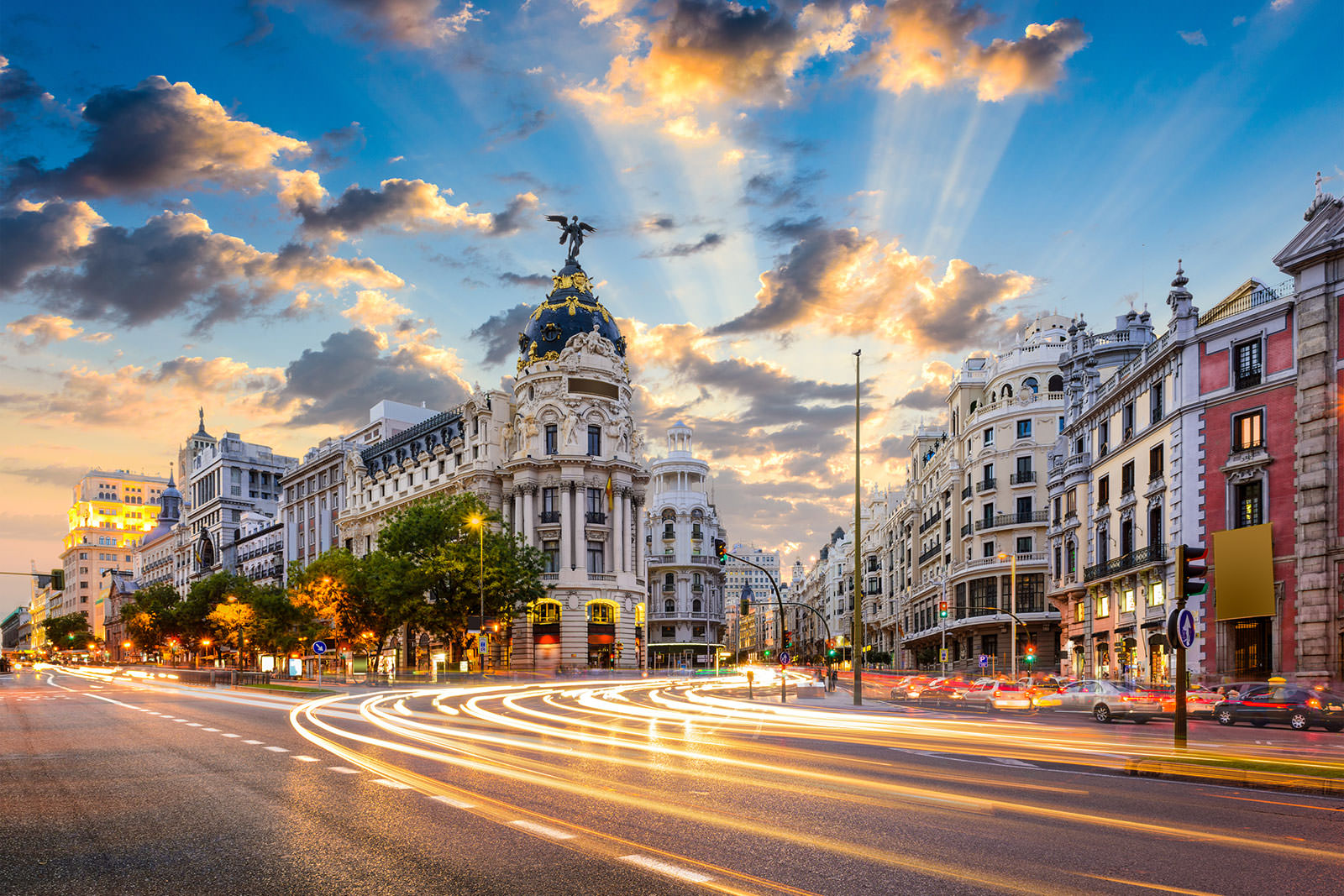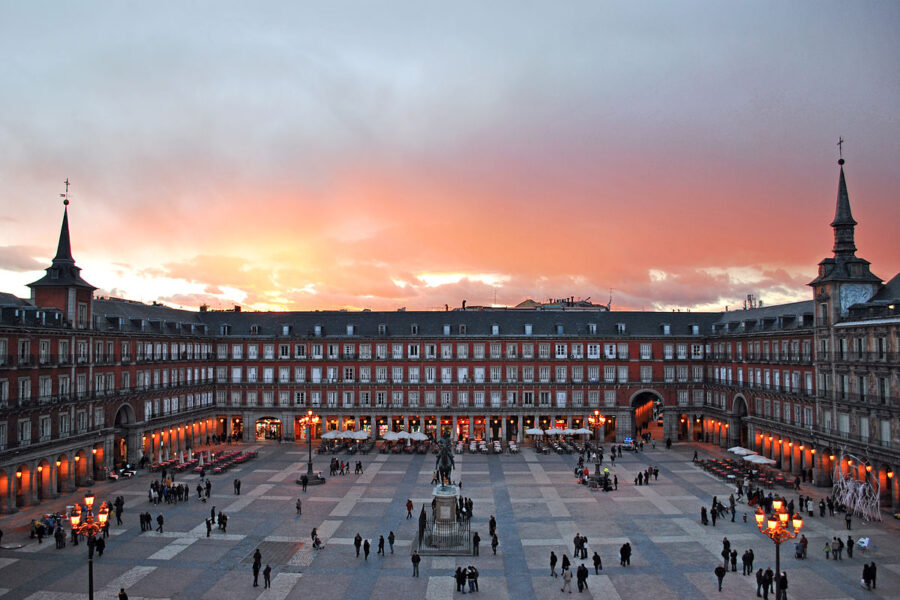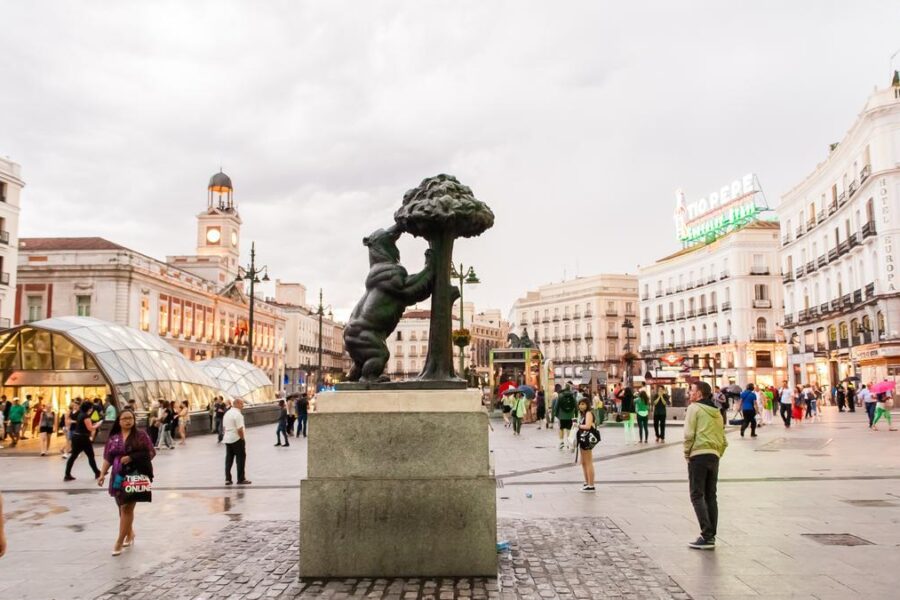Founded between 1910 and 1929, Gran Vía is Madrid’s most famous boulevard. It connects the Salamanca and Argüelles districts and is home to shops, restaurants and some of the capital’s most iconic buildings.
A bit of history
Gran Vía is the best known street in Madrid. Historically it has been given many other names, such as Avenida de Rusia or Avenida del Quince y Medio. The most significant was Avenida de José Antonio, in homage to José Antonio Primo de Rivera for his victory in the Civil War.
The history of Madrid’s Gran Vía took a long time to get underway. The first sketches date from 1862, when part of Madrid’s historic centre was being renovated, but the final design did not arrive until 1899, when the architects José López Salaberry and Francisco Octavio Palacios presented the project. The construction of the Gran Vía lasted several decades, with work finally starting in 1910 and finishing in 1929.
The Gran Vía was one of the most important works in Spain, as more than 300 houses had to be demolished and almost 50 streets were affected. Thanks to the Gran Vía, better communication was achieved between the centre of Madrid (Calle Alcalá) and the northwest of the city (Plaza de España).
What to see in Gran Vía
Nowadays, there are basically three types of establishments on Gran Vía: restaurants, fashion shops and cinemas. Although nowadays you won’t find as many cinemas as in the past, in its heyday, Gran Vía was nicknamed the Broadway of Madrid.
Gran Vía is one of the nerve centres of Madrid and you can find atmosphere here at any time of the day, all year round. Some of the most famous buildings on this mythical Madrid street are the Metrópolis Building and the Carrión Building, crowned by the famous Schweppes sign that presides over the Plaza del Callao.




